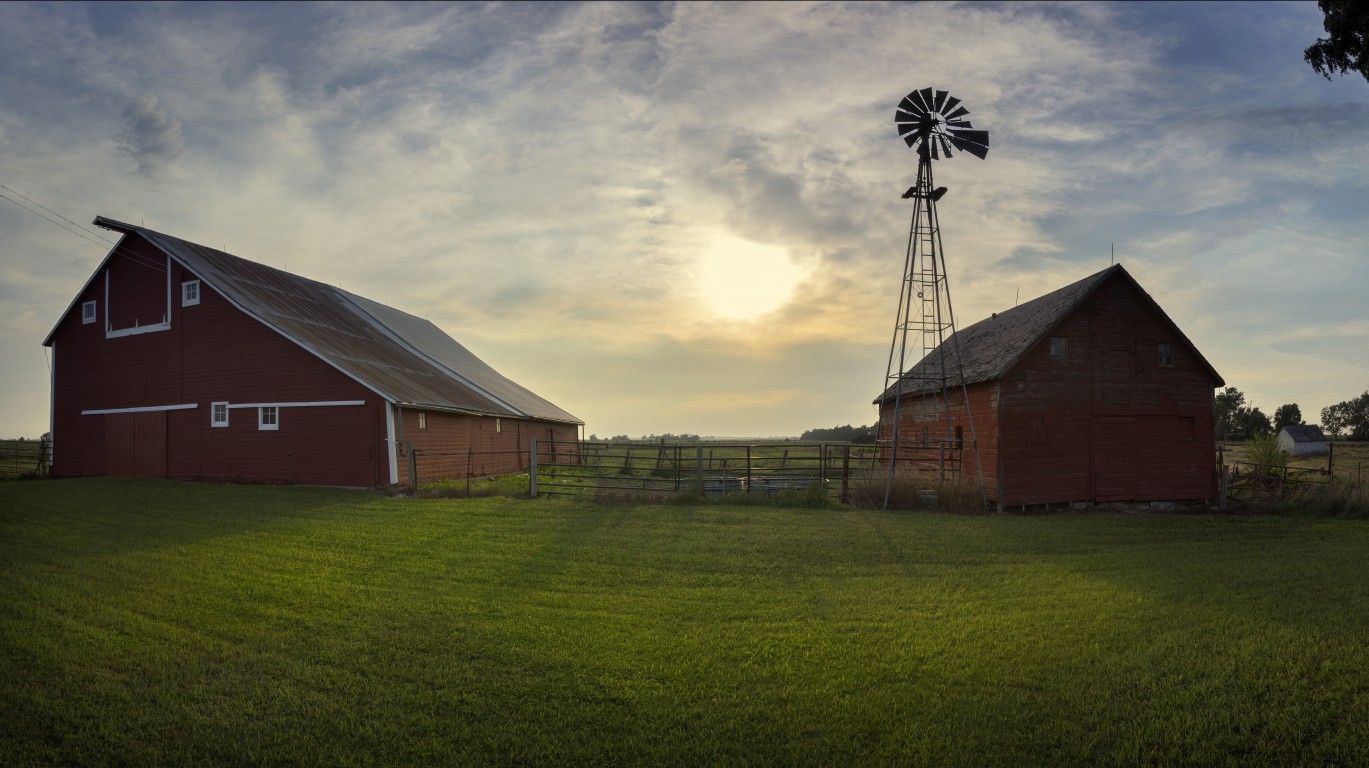Health and Healthcare
COVID-19: This Is the Deadliest County in America

Published:

New daily confirmed COVID-19 cases in America have risen sharply in the past few weeks, taking counts to record levels. For several days in the past two weeks, the number jumped above 250,000 new confirmed cases per day. Yesterday, cases rose by 143,073 to 24,433,486.
The winter has been worse than the warmer months were. Fatal case rates are as bad as, if not worse than, when the nation was hardest hit by this measure from early April to mid-May, when the counts rose above 2,000 nationwide on some days. The number of coronavirus fatalities has begun to reach near 4,000 a day recently. Total fatal cases in the United States now number 404,812, after a one-day gain of 1,749.
The Institute for Health Metrics and Evaluation at the University of Washington’s School of Medicine, which has a well-followed model for the rise in COVID-19 cases and deaths, forecasts U.S. fatal cases will reach 566,720 by May 1 if social distancing and mask wearing do not improve.
Rates of both confirmed and fatal cases are highly uneven across the nation. The county with the worst rate of fatal cases per 1,000 people is Jerauld County, South Dakota. It has a five-year average population of 2,029. Deaths per 1,000 stand at 7.89, many multiples of the national average.
Jerauld County is in the center of the state. It has been steadily losing population since 1930, according to information from the U.S. Census Bureau. Over 98% of the population is white. Almost 20% of the population lives below the poverty line, which is well above the national average.
According to The New York Times, South Dakota ranked among all states based on deaths per 100,000 people. The death rate has slowed considerably in recent weeks but remains terrible.
Next on the list based on deaths per 1,000 is Dickey County, North Dakota, at 6.44. It has a five-year population average of 4,970.
That is followed by Hamlin County, South Dakota, with 6.33 deaths per 1,000 people on January 18. It has a five-year average population of 6,000. It is in the southern part of the state, west of the Missouri River.
Gregory County, South Dakota, ranks next with 6.19 deaths per 1,000 based on a seven-day average. Its five year-average population is 4,201.
Turner County, South Dakota, is fifth on the list based on fatal cases per 100,000 with 5.93. Its five-year average population is 8,264.
Another measure of how hard a county has been hit is confirmed cases per 1,000. On January 18, this figure was highest in Crowley, Colorado, where the number was 309.41. Its average five-year population is 5,630.
Second was Trousdale, Tennessee, where the number was 239.01. The county has a five-year average population of 9,573.
Dewey County, South Dakota, in third place, has 236.89 confirmed cases per 1,000. The county has a five-year average population of 5,779.
Bent County, Colorado, is next with 217.94 confirmed cases per 1,000 based on a seven-day average. Its five-year average population is 5,809.
Lincoln County, Arkansas, is next at 215.99. Its five-year average population is 13,695.
Most of these counties are in the hard-hit areas of the upper Midwest, based on the lists of confirmed death rates and confirmed case rates. Without exception, they are in rural areas.
Credit card companies are pulling out all the stops, with the issuers are offering insane travel rewards and perks.
We’re talking huge sign-up bonuses, points on every purchase, and benefits like lounge access, travel credits, and free hotel nights. For travelers, these rewards can add up to thousands of dollars in flights, upgrades, and luxury experiences every year.
It’s like getting paid to travel — and it’s available to qualified borrowers who know where to look.
We’ve rounded up some of the best travel credit cards on the market. Click here to see the list. Don’t miss these offers — they won’t be this good forever.
Thank you for reading! Have some feedback for us?
Contact the 24/7 Wall St. editorial team.